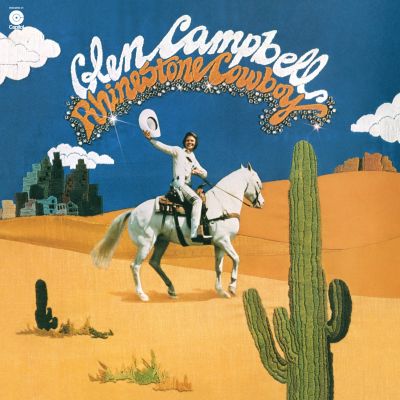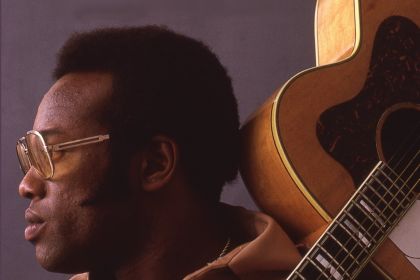SONGWRITER
Rhinestone Cowboy: origins of Glen Campbell's best-known track

Glen Campbell's Rhinestone Cowboy LP cover
Rhinestone Cowboy is a notable country track that hit the tops of global charts in the 1970s, extending beyond the confines of its own genre. The song was written by American songwriter Larry Weiss for his only 1974 album Black & Blue Suite and was later released as a single which never received much attention.
In 1975, Rhinestone Cowboy was covered by Glen Campbell—a renowned country singer and highly skilled guitarist who worked as a session musician with artists such as Frank Sinatra and Elvis Presley. Shortly after its release, Campbell's version topped the Billboard Hot 100 becoming his best-known and largest-selling song.
Over the following decades, Rhinestone Cowboy remained a fixture in the mainstream sustained by a variety of covers, among which recordings by Loretta Lynn, Cher, Radiohead, and Bruce Springsteen deserve special attention.
Listen to Rhinestone Cowboy (Remastered) by Glen Campbell:
Compositionally, Rhinestone Cowboy showcases an extended harmonic structure and follows the canons of tonal music theory namely the Ionian mode. In the harmonic analysis of the verses chord chains, the scale degrees (denoted with Roman numerals) show the following progressions in the key of C major:
- C–G–F–Dm–F–C or I–V–IV–ii–IV–I;
- C–G–F–C–F–D→G or I–V–IV–I–IV–V/V→V.
The first progression ends with the musical turnaround known as a plagal cadence sometimes used in classical works to close musical phrases. The second progression reveals a classic case of the tonicization of the fifth scale degree, utilized here with the D secondary chord that temporarily switches the tonal center to G major.
The chorus is accompanied by progressions with all the three primary major chords of the Ionian mode, a rather common technique in pop music:
- F–C–G–F–C or IV–I–V–IV–I;
- C–G–C–G or I–V–I–V;
- F–C–G–F–C or IV–I–V–IV–I;
- C–G–F or I–V–IV.
Discover more songs composed in Ionian major mode and check out their harmonic analysis in the following articles:
- 6 songs to unpack Ionian mode and the major scale
- 9 Beatles songs that combine harmonic major with Ionian mode
- Hasta Mañana: the origins of the best ABBA ballad
- Smackwater Jack: the classic tale of outlaws and lawmen and the blues harmony behind it
- Longfellow Serenade and the fireside poet that kindled Neil Diamond's song
- Wildwood Weed: the cheeky ganja farmers song that got banned
- Sugaree: Jerry Garcia's song referencing his lyricist's criminal past
- D'yer Mak'er: meaning of Led Zeppelin's most controversial song
- Seven Seas of Rhye: song of imaginary land brought to life by Ionian and Mixolydian modes
- Coal Miner's Daughter was forced to remove a third of the lyrics from her autobiographical song
- I Wanna Be Sedated: pure classical harmony cementing the Ramones' hit in punk rock history



